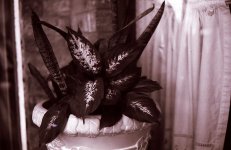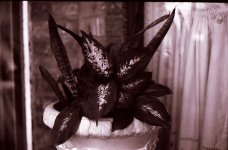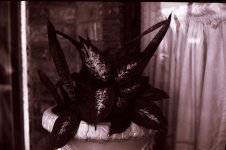Ducky
Well-known
- Local time
- 4:35 PM
- Joined
- Jul 26, 2006
- Messages
- 1,287
I have a Yashica GS. Everything seems to work including the metering.
If I take four pictures in a row of the same object in the same lighting, varying only the aperture, should the four photos look exactly the same in exposure and tone? I tried several series of four on a roll and found a noticible but acceptable diference betweet the four, from a bit light to a bit dark.😕
I shot the four between the yellow, not enough light, and the red, too much light, arrows.
I'll post when the film dries.
Thanks.
If I take four pictures in a row of the same object in the same lighting, varying only the aperture, should the four photos look exactly the same in exposure and tone? I tried several series of four on a roll and found a noticible but acceptable diference betweet the four, from a bit light to a bit dark.😕
I shot the four between the yellow, not enough light, and the red, too much light, arrows.
I'll post when the film dries.
Thanks.
Last edited:




